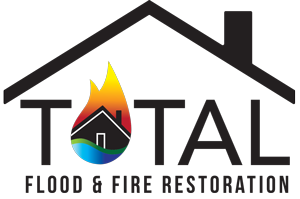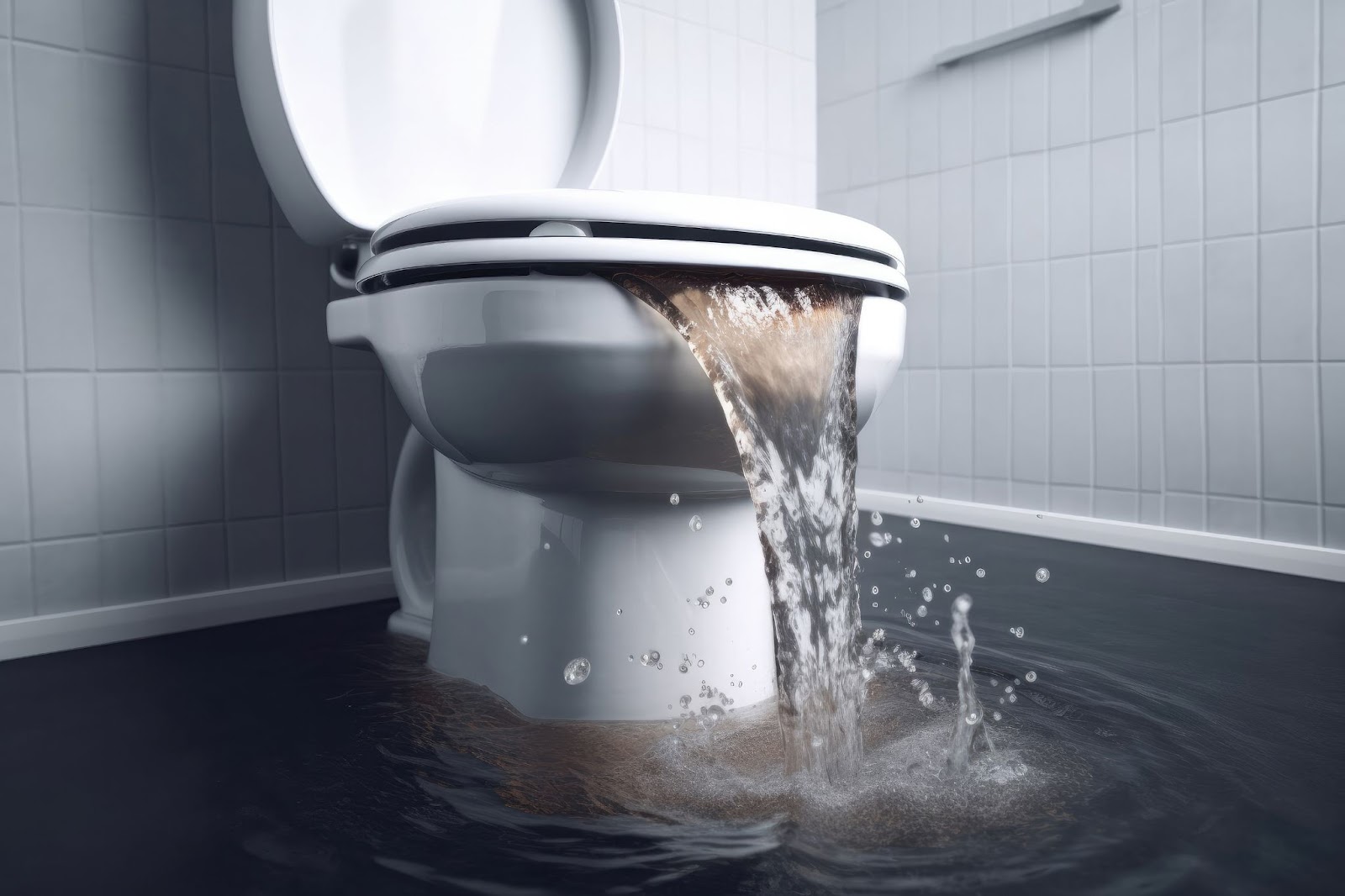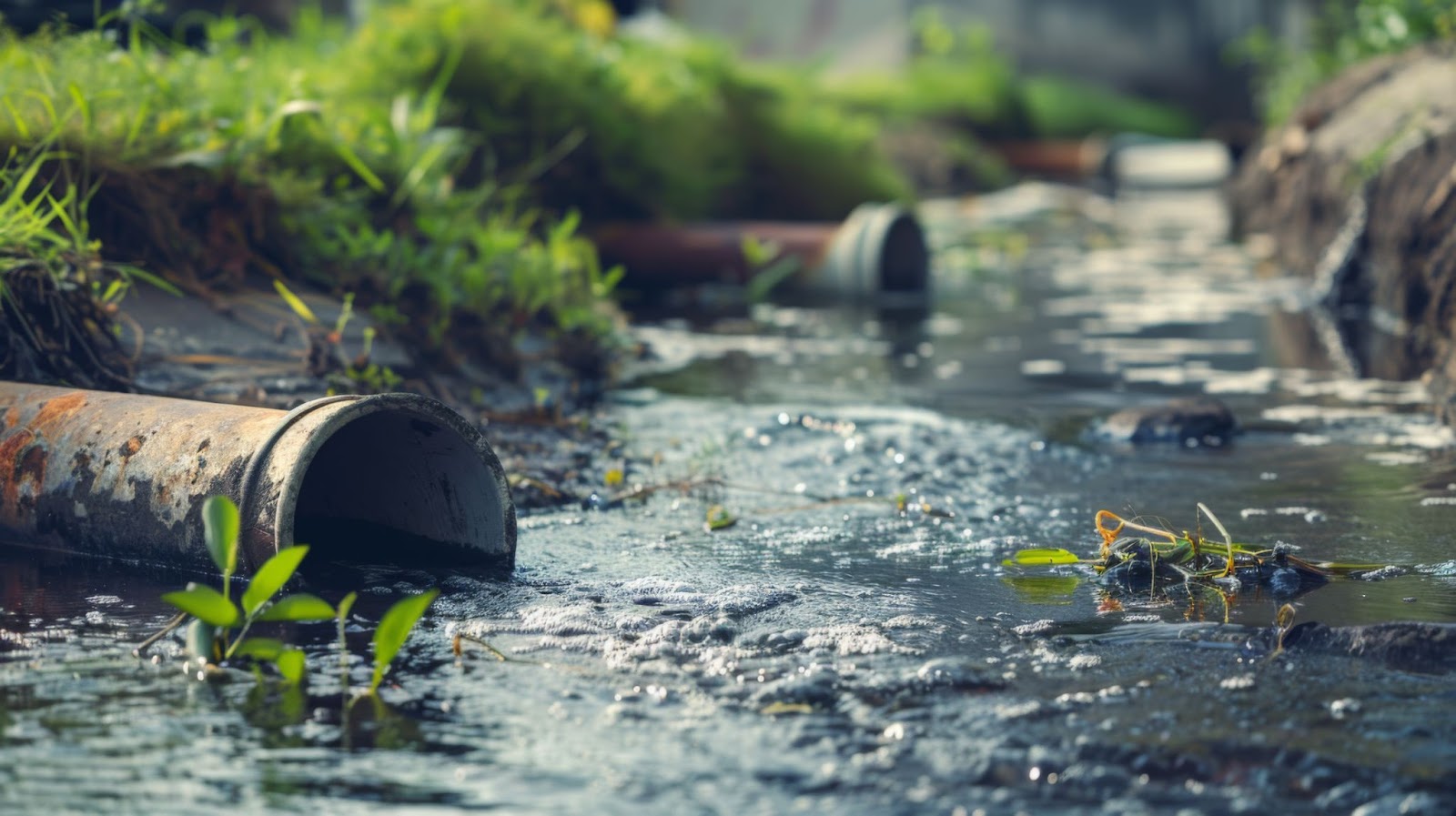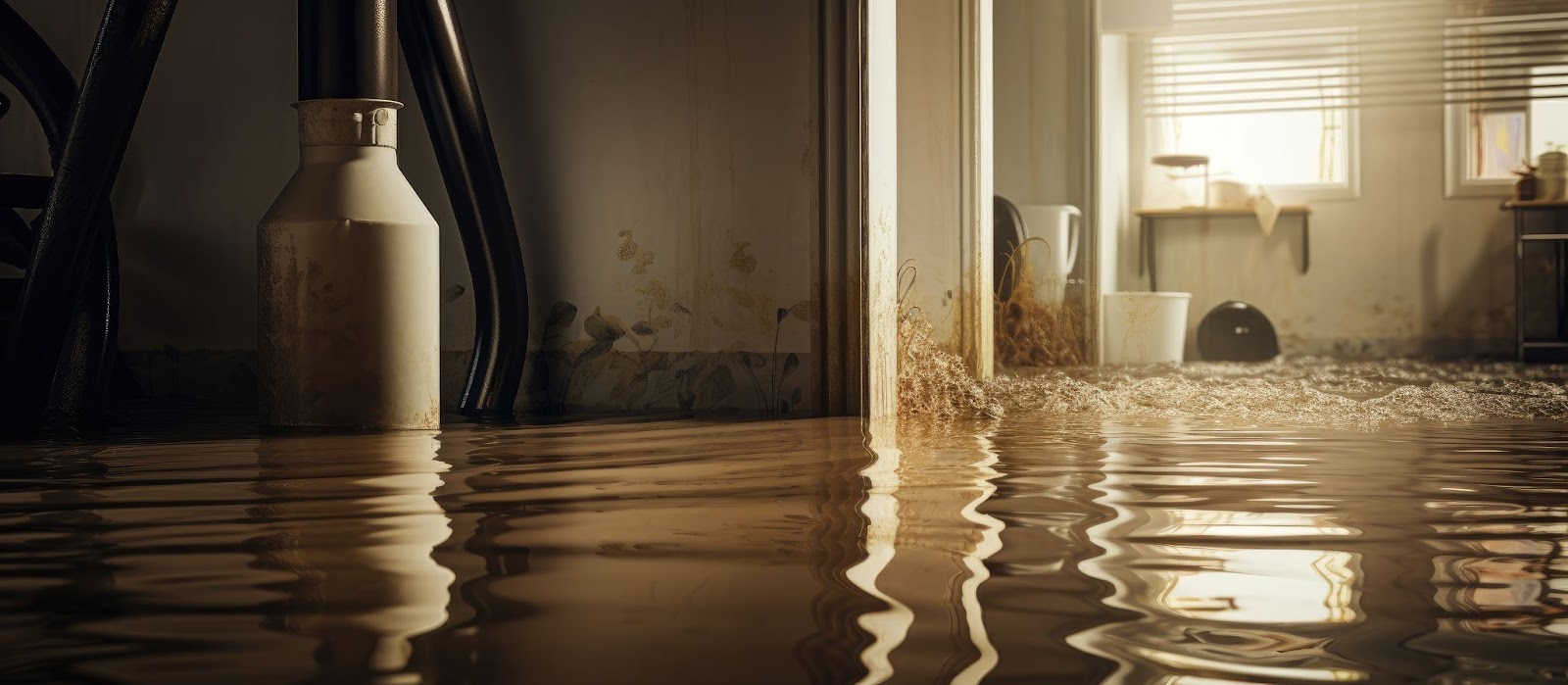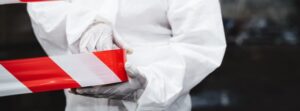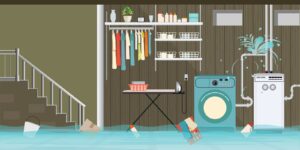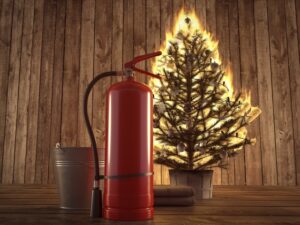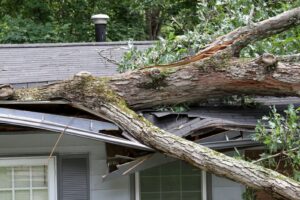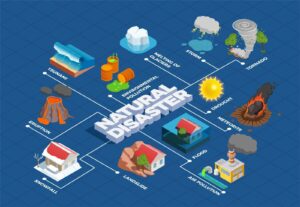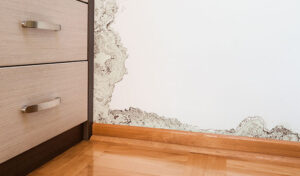Sewage damage creates messy, expensive problems. From clogged pipes to sewer line backups, recognizing the warning signs early helps protect your home. Ignoring these signals could lead to serious home damage, health risks, and costly repairs. Let’s break down the key signs that show your home might face sewage risks and what to do about them.
1 – Slow or gurgling drains
When your drains slow down, it often means trouble in your plumbing system. Blockages could be forming if water pools in the sink or takes too long to flow. Gurgling sounds add to the warning. This noise often comes from trapped air trying to escape through partially clogged pipes, signaling potential sewage risks.
A single slow drain might indicate a localized issue, but when multiple drains clog or gurgle simultaneously, it points to a more significant problem, like a sewer line blockage. Pay attention to any unusual noises or behavior in your drains.
2 – Sewage odors around the home
The smell of sewage inside or outside your home is a red flag. This unpleasant odor often comes from leaks in sewer pipes or backed-up plumbing. When sewage gases escape your home, they smell bad and pose health risks. Prolonged exposure to these gases could lead to respiratory problems and other health issues.
Smelling sewage outside your house might indicate a cracked or damaged sewer line. Inside, the odor usually points to venting problems or leaks in the pipes under sinks, in walls, or near the foundation. Always investigate sewage odors immediately to minimize home damage.
3 – Frequent clogs in toilets or drains
If your toilets or drains clog more often than usual, you’re at an increased risk for sewage problems. Persistent clogs often signal underlying problems in the sewer line, such as tree root infiltration, grease buildup, or pipe collapse. Recurring clogs aren’t simply an inconvenience but a clear warning of potential sewage damage.
Toilet clogs often indicate blockages in the main sewer line, especially if plunging or snaking doesn’t solve the problem. Watch for clogs in multiple fixtures at the same time, as this often indicates a problem affecting more than one area.
4 – Wet spots or puddles in your yard
Unexplained wet areas in your yard could mean a broken sewer line. Sewage water seeping into the ground creates soggy patches or visible puddles, even when there hasn’t been rain. These spots often come with a foul odor, confirming sewage risks.
You might also notice lush, green grass growing in patches of leaking sewage. This growth happens because sewage acts as a fertilizer. While it might make grass look healthier, it signals a serious problem with your home’s sewer system.
5 – Backed-up water in sinks, tubs, or showers
When water backs up in your sinks, tubs, or showers, it shows that wastewater isn’t draining properly. This often happens when a blockage forces water to flow back into the fixtures. For example, flushing the toilet might cause water to rise in the shower drain, or running the sink might make the toilet bubble.
These backups point to issues with the main sewer line rather than individual drains. Address the problem quickly to prevent extensive sewage damage throughout your home.
6 – Cracks in your foundation or walls
Sewage risks aren’t limited to inside your home. Leaking sewer pipes could cause cracks in your foundation or walls. Water leaking underground erodes soil, creating pressure shifts that lead to cracks. Over time, this compromises your home’s structural integrity.
Inspect your foundation regularly for new cracks or signs of water intrusion. Catching these issues early helps prevent severe home damage and avoid costly repairs.
7 – Increased pest activity
Pests like rodents, cockroaches, and sewer flies thrive in areas with sewage leaks. If you notice an uptick in pests around your home, it could signal sewage risks. These pests often find entry points through damaged sewer pipes or leaks.
Insects and rodents bring additional health risks, spreading bacteria and diseases. Addressing sewage problems helps control pest activity and keeps your home safe and clean.
8 – Mold or mildew growth
Mold and mildew grow rapidly in damp conditions, often caused by hidden sewage leaks. Look for discoloration or spots on walls, ceilings, or floors, especially in areas with plumbing. These growths damage your home and affect indoor air quality and health.
Mold gives off a musty smell, so you might detect its presence even if you don’t see visible growth. Treat mold as a sign of potential sewage damage and investigate the source of moisture immediately.
9 – Spiking water bills
Unexplained increases in your water bill might indicate a hidden leak in your plumbing system. Leaking sewer lines waste water and drive up costs, even if you don’t notice any visible signs of damage.
Compare your current water usage to previous months. If it’s significantly higher without changes in your habits, investigate for leaks or breaks in the sewer line. Tackling these issues early prevents long-term home damage and saves money.
Increases in your water bill might indicate a hidden leak in your plumbing system. Leaking sewer lines waste water and drive up costs, even if you don’t notice any visible signs of damage.
Compare your current water usage to previous months. If it’s significantly higher without changes in your habits, investigate for leaks or breaks in the sewer line. Look around your home for damp spots, unusual puddles, or water damage near plumbing fixtures, which may point to the problem.
Pay attention to any unusual sounds like dripping or running water when you aren’t using your fixtures. Ignoring high water bills could allow small leaks to grow into expensive repairs.
10 – Flooding in the basement
Basements are especially vulnerable to sewage damage. Flooding or standing water often comes from sewer backups or leaks in underground pipes. Even minor flooding may lead to extensive home damage, including ruined flooring, compromised walls, and mold growth.
If you see water pooling in your basement, check for foul smells or discoloration, which could indicate sewage risks. Act quickly to address the source of the flooding before the damage worsens.
What to do if you notice these signs
If you recognize any of these warning signs, take action immediately to prevent further damage. Start by contacting a professional plumber or sewage cleanup service. These experts diagnose the issue and offer solutions, such as clearing blockages, repairing pipes, or addressing structural problems.
Stop using affected fixtures until you resolve the problem. Running water through damaged or blocked pipes increases pressure, leading to more leaks or backups. Shut off your water supply if necessary to limit the damage.
How to prevent sewage damage
Preventing sewage risks starts with regular maintenance — schedule routine plumbing inspections to catch issues early. Keep grease, oils, and non-flushable items out of drains to avoid blockages. Install backflow prevention devices to stop wastewater from entering your home during heavy rain or flooding.
Maintain your sewer line by trimming tree roots near your home and inspecting for damage periodically. These proactive steps help you avoid sewage damage and keep your home safe.
Sewage damage requires quick action — count on Total Flood & Fire Restoration
Recognizing the signs of sewage risks early protects your home from extensive damage. Pay attention to your yard’s slow drains, foul odors, and unusual wet spots. Addressing these issues promptly prevents health hazards, protects your home, and avoids costly repairs.
Whether you’re dealing with sewage damage now or preparing to prevent it in the future, staying vigilant helps keep your home safe and secure. If you notice any warning signs, act quickly to resolve the problem before it worsens.
Count on Total Flood and Fire Restoration for expert sewage damage clean-up
When sewage damage strikes, Total Flood and Fire Restoration steps in with top-notch cleanup services designed to go beyond insurance requirements.
Our skilled team delivers efficient, reliable restoration, making the process smooth and hassle-free while ensuring your home gets the attention it deserves.
Don’t face the mess alone. Contact Total Flood and Fire Restoration or call 385-503-2846 anytime for trusted support and the peace of mind you need during challenging times.
